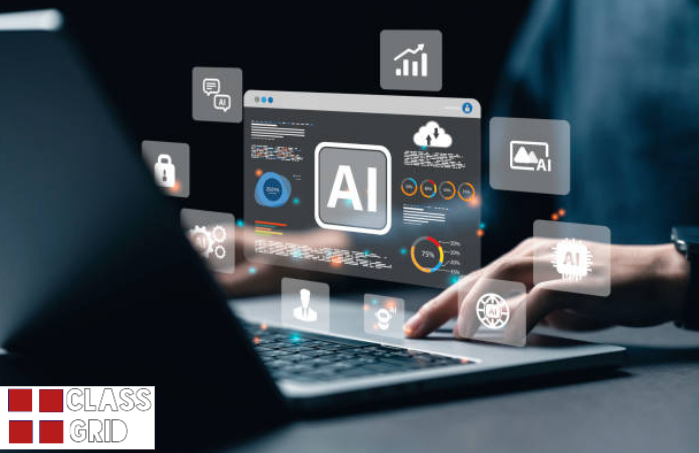How To Use AI For Business Analysis

In today’s fast-paced business landscape, staying ahead of the curve means leveraging every tool at your disposal. Artificial intelligence is now the order of the day because of the multi-tasking tools that it offers. It is possible to ask questions like how to use AI for business analysis and many more inputs and be sure to get an answer like a professional.
But, imagine having a tireless assistant that sifts through mountains of information in seconds, uncovers hidden patterns, predicts market trends, and offers actionable insights tailored just for your brand. Whether you’re a seasoned entrepreneur or a budding startup founder, integrating AI into your business analysis can unlock untapped potential and drive strategic growth like never before.
Why AI and Its Impact On Business Analysis
Artificial Intelligence (AI) is revolutionizing the way businesses operate, making complex tasks simpler and more efficient. Among its many applications, business analysis stands out as a crucial area where AI can provide significant insights and drive strategic decisions. Gone are the days of relying solely on spreadsheets and manual data crunching. Today’s savvy businesses harness AI tools to sift through massive datasets quickly, uncover trends, predict outcomes, and make informed choices that propel them ahead of the competition.

As organizations increasingly embrace this technology, understanding how to use AI for business analysis has become essential. This blog will explore the transformative benefits of integrating AI into your analytical processes while providing you with practical guidance along the way. Whether you’re a small startup or an established corporation, leveraging AI could be your key to unlocking new levels of efficiency and insight in your business strategy.
Automating repetitive tasks is another significant advantage. Analysts can focus on strategic decision-making rather than mundane data entry or basic calculations. This shift allows for more creativity and innovation in problem-solving. Predictive analytics powered by AI offers businesses foresight into trends and customer behaviours. By leveraging historical data, companies can make informed decisions to stay ahead of the competition.
Furthermore, AI fosters better collaboration across teams. With shared insights generated from advanced algorithms, departments work synchronously towards common goals—streamlining processes and improving efficiency significantly.
This tech-savvy approach not only enhances productivity but also drives growth in unexpected ways. Businesses have access to a variety of AI tools tailored for analysis, each designed to meet specific needs. Predictive analytics tools harness historical data to forecast future trends. This helps businesses make informed decisions based on expected outcomes.
Natural language processing (NLP) applications enable companies to analyze large volumes of text data. They can extract insights from customer feedback or social media interactions, revealing valuable sentiments and opinions. Data visualization software powered by AI offers intuitive dashboards. These platforms turn complex datasets into easy-to-understand visual formats, making it simpler for teams to spot patterns and anomalies.
Machine learning algorithms are another critical type of tool. They adapt over time, improving their accuracy as they process more information—a powerful resource for continuous improvement in business strategies. Lastly, robotic process automation (RPA) streamlines repetitive tasks by automating them. This allows analysts to focus on strategic initiatives rather than mundane activities that consume valuable time.
Benefits Of Using AI For Business Analysis
Companies across various sectors have harnessed AI to enhance their business analysis processes. For instance, a major retail chain implemented predictive analytics powered by machine learning. This allowed them to forecast inventory needs more accurately, reducing both stockouts and overstock situations.
In the financial sector, a leading bank adopted natural language processing tools to analyze customer feedback from multiple channels. The insights gained helped refine services and improve overall customer satisfaction significantly. Another example comes from healthcare. A hospital network utilises AI algorithms to process large volumes of patient data. By identifying patterns in treatment outcomes, they optimized operational efficiency and improved patient care protocols.
How To Use AI For Business Analysis
These case studies illustrate the transformative potential of integrating AI into business analysis functions, showcasing real-world benefits beyond mere theory or speculation.
- First, identify the specific business problem you want to address. This clarity will guide your AI approach.
- Next, gather relevant data from various sources within your organization. Quality input is essential for effective analysis.
- Select an appropriate AI tool that fits your needs. Options include machine learning platforms or predictive analytics software.
- Train the model using historical data. This step allows the AI to learn patterns and trends that are critical for accurate insights.
- Once trained, test the model on new data to evaluate its performance. Make necessary adjustments based on the results obtained.
- Finally, integrate AI-generated insights into decision-making processes. Monitor outcomes over time to refine strategies further and enhance effectiveness in future analyses.
Types of AI Tools For Business Analysis
While AI offers remarkable potential for business analysis, it isn’t without its challenges. Data quality is a significant concern. If the input data is flawed or biased, the insights generated can be misleading. Integration poses another hurdle. Many businesses struggle to incorporate AI tools with existing systems and processes. This can lead to inefficiencies and frustration among teams.
Moreover, there’s often a skills gap within organizations. Employees may lack the necessary expertise to interpret AI-generated results effectively. This limitation can hinder strategic decision-making. Ethical considerations also come into play. Relying on algorithms raises questions about transparency and accountability in decision-making processes.
Lastly, costs associated with implementing advanced AI solutions can deter smaller businesses from leveraging this technology fully. Balancing investment against potential returns becomes crucial for sustainable growth in these scenarios. As AI technology evolves, its impact on business analysis will deepen. Machine learning models are becoming more sophisticated, enabling organizations to make data-driven decisions faster and more accurately.
Predictive analytics is set to revolutionize how businesses forecast trends. By analyzing historical data, companies can anticipate market shifts and customer preferences before they happen. Natural language processing (NLP) is also gaining traction. This advancement allows machines to understand human language better, making it easier for analysts to extract insights from unstructured data such as emails or social media posts.
Automation tools will streamline routine tasks in business analysis. Analysts can focus on strategic thinking rather than spending time on repetitive processes. Moreover, integrating AI with cloud technologies will enhance collaboration among teams. Real-time access to insights will foster a culture of informed decision-making across various departments.








